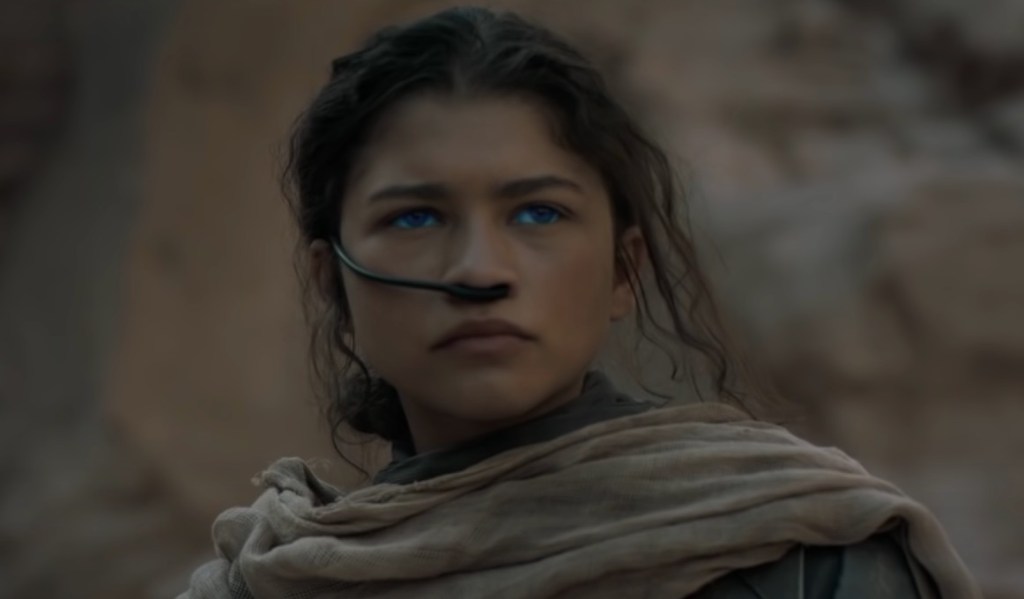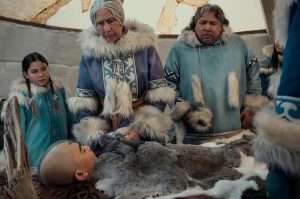The hotly anticipated second cinematic take on Frank Herbert’s 1965 sci-fi classic Dune rolls into theaters this week. Billed as an adaptation and “not a remake” of the now infamous 1984 misfire by David Lynch, the new Dune arrives in two, two-hour-plus chapters. “Part I” is a marked upgrade from that butchered Lynch release (he lost creative control and the film was edited down to just over two hours). It’s sharper, more conformable in its saga duds, and as you can imagine, the use of modern computer effects goes a long way to offset those cheesy sets and clunky models.
Set some 8,000 years in the future in a galaxy far, far away, Dune, much like Star Wars (or is it Star Wars, much like Dune?) is driven by lore, the assent of a man-boy to the mantle of hero and some nasty interstellar parlor games. We hone in on House Atreides, a noble lot tasked by the intergalactic emperor with housesitting a barren desert planet called Arrakis. The why is a MacGuffin of sorts: the planet’s main resource is its spice-melange, a radiant cinnamon-like powder that makes spaceships travel at warp speed and also gives those that can consume it and not die superhuman awareness.
Arrakis also has monstrous sand worms that like to munch on mining equipment and hovercraft for fun. Then there’s the indigenous Fremen, who live in caves below the Saharan seas of sand and have a long history of oppression by foreigners, most notably the violent regime of the Harkonnens, the previous imperial group to occupy the planet.
Directed by Denis Villeneuve, who seems a logical choice given his solid outings with Arrival (2016) and Blade Runner 2049 (2017), the film’s got plenty of visual grandeur and cinematic moodiness to drink in, but in execution, Dune can get pretty bleak, matter-of-fact and, at times, slow. In short, it underwhelms as it entertains.
The movement in “Part 1” is fairly pat. Machinations abound to topple the Atreides (Oscar Isaac as their leader, Duke Leto Atredies). In the wake of the fallout, the Duke’s son, Paul (Timothée Chalamet, who you can also catch in the next theater in Wes Anderson’s The French Dispatch), who had visions of being on Arrakis before setting foot on it, takes up with the Fremen, led by Javier Bardem’s Stilgar, and as their legend has it, he may just be the messiah they’ve been waiting for. There are witch tricks conjured up by Paul’s birthmother (Rebecca Ferguson) that make men bend to her will, literally, and some neat swordplay by Paul’s guardians Gurney Halleck (Josh Brolin) and Duncan Idaho (Jason Momoa). Which raises the question: who brings a knife to a laser cannon fight in the year 10,191?
Given the number of failures at attempting to bring Dune to the big screen (there were two attempts prior to the Dino de Laurentiis-Lynch collaboration, including one that aspired to have Orson Welles as Baron Harkonnen, Salvador Dalí as the emperor and a soundtrack by Pink Floyd), many have tagged the material as unfilmable. Villeneuve’s version doesn’t quite close the book on that, not yet, but it does demonstrate the capability and swagger to do so in “Part II.”
The most glaring shortcoming lies in the depth of its characters. Like the 1984 spin, there are a lot of accomplished actors in small roles that never really expand beyond their surface definition. Duncan and Gurney are loyal to the bitter violent end, we get that, but shouldn’t there be more there? It’s a wonderment too as Villeneuve has repeatedly shown the ability to viscerally tap into his protagonists’ internal struggles in projects both small (Incendies, Polytechnique) and large (Sicario, Arrival).
One of the warm pleasures of Dune comes in the beastly rendering of Baron Harkonnen, with Stellan Skarsgård nearly unrecognizable as the Kurtz-esque incarnation. Our first glimmer of his corpulence is a shadowed upward peering angle, clearly an homage to Francis Ford Coppola’s framing of Marlon Brando in Apocalypse Now (1979). For the cinematically well-versed, there’s a whole treasure trove of film allegories to be had, Easter eggs, if you will, carefully packed in for your discerning eyes and ears. And of course, there’s the hair. I thought it impossible to top Kyle MacLachlan’s majestic mane in the 1984 Dune — a clear byproduct of the big hair 80s — but Chalamet’s free flowing locks are there in the running.
At the time Herbert wrote Dune, Rachel Carson’s environmental wake-up call Silent Spring had just come out. On a trip to the Pacific Northwest, Herbert had become indelibly awed by the shifting sands of the Oregon desert that kept drifting across highways and shutting them down. Both influences clearly found their way into his prose, and while those themes about man and nature, cause and effect, may not have resonated loudly then, in the climate-conscious now, they roar. Then there’s the matter of the indigenous folk who have their land and resources violently annexed by outside forces invoking entitlement and eminent domain.
Overall, there’s a lot in “Part 1” that feels held back. Riding the worm, for one, and the realization of Feyd Rautha, made so memorable and campy in the 1984 version by Police frontman, Sting. It’s a lot like the first two entries of Peter Jackson’s Lord of the Rings trilogy in that you feel like the movie just stops mid-scene. To that end, we wait for “Part II,” which Villeneuve has just signed on for, as well as the series Dune: The Sisterhood.


















